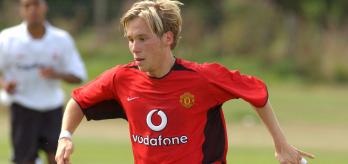Introduction
There are many aspects that define the development of talent within a football ecosystem. These include the training opportunities available to young talent and the alignment of the ecosystem’s key stakeholders and partners. A talent needs to hone the core skills required to play at the highest level, and regular training opportunities under the guidance of high-quality coaching provide the setting where this cultivation takes place. In any one country, there are many key stakeholders and partners that are crucial to establishing the environment where talent is trained and developed. Aligning these organisations is critical to providing a robust and clear pathway that minimises dropout and maximises opportunities for talented players to transition to the professional game and achieve their dream of being professional footballers.
At present, many talented players across the globe do not always receive the training opportunities needed to enhance their skills to the level required to make it to the elite levels of the game. Within different countries, many key stakeholders and partners that form the environment that accommodates football development are also not as aligned as they could be. The room for improvement in these two areas leads one to question what heights these players could reach if their developmental circumstances were optimal. In this article, we discuss these two aspects in further detail, ending with takeaways that – if adhered to – could help us to bring out the best in the young talent in our communities.
Training opportunities
Maximising the number of training opportunities and the contact time between coaches and players lead to greater opportunities for development. The player-to-coach ratio can help to shed light on the extent to which the latter is achieved. A lower ratio indicates a setting where coaches have greater opportunities to meet the specific developmental needs of individual players. Additionally, players should train with others of a similar level to their own; when the standard of a cohort is high throughout, the individuals within it will push each other to new heights. Every deliverable should be “player centred”. Training schedules must be programmed to maximise availability both for training activities and games and to minimise the risk of load-related injuries, particularly during the key years of growth.
Academies in the top 20 MAs offer the highest number of training weeks per season
The graphs below show the average number of training weeks per year and the average number of training minutes per week. In general, boys have more training weeks than girls (on average, 39 weeks for boys compared to 37.9 weeks for girls). For both genders, the academies in the top 20 MAs have significantly more training weeks than the lower-ranked countries.
Academies in the top 20 MAs offer a lower player-to-coach ratio for both boys and girls
As a trend, the player-to-coach ratio is greater in lower-ranked MAs in the top 100. Across each age bracket (U-9 to U-11, U-12 to U-15, and U-16 to U-21), academies in the top 20 MAs have the lowest player-to-coach ratio for both boys and girls. For example, the average number of players per coach at U-9 to U-11 level in the top 20 is 10.4, compared to 12.4 in boys’ academies in MAs ranked 51 to 100, an increase of approximately 20%.
Global findings:
-
The coaching staff in each academy should follow a programmed coaching curriculum across the age groups. This should contain key objectives and criteria for the players to achieve throughout the season before they transition to the next age group.
-
Implementing age-appropriate training models helps academies to maximise the developmental opportunities for players.
-
Talents all learn in different ways. Look to offer a variety of teaching and coaching methods both on and off the pitch. In addition, can talents take ownership of their development? Set tasks or homework to acquire new skills or gain a greater understanding of the game.
-
Every talent is different and academies must be aware of the impact of maturation upon talent development. Academies should therefore seek to offer opportunities to early developers to step up an age group in training to further their development and to allow them to play with talents of a similar stature and level of physical skill. Likewise, seek to offer late developers the opportunity to play and train with players of a similar size and stature. Bio-banding teams can be a great way to offer a different stimulus in training and games.
-
Above all, the coaching environment must be one that promotes fun and lets the talents express themselves.
Stakeholders and partners in talent development
There are several key stakeholders and partners that play important roles in terms of player development. For example, member associations (MAs) play a pivotal role in managing the entire feeder system – which includes the different types of academies such as clubs, schools and centres of excellence – to ensure that they buy in, and adhere, to an overarching development plan that helps to create an environment where talent is effectively nurtured. Given the pre-eminent position that academies hold in the vast majority of MAs in terms of player development, they are also key stakeholders in the process. Forging meaningful partnerships, supporting, and overseeing the academy system are important priorities for MAs where these systems exist.
Most MAs have a challenging dual role to play in this area. On the one hand, MAs oversee the system and seek to check the quality of the environment in clubs and academies. On the other hand, they also have direct responsibility for the development of players in national teams. It is important to point out that the way in which some of these institutions are involved in the development of young players can vary from one country to the next. For example, a school may supplement club academies in one country, whereas, in another, it may have the crucial role of being the only place to host organised football. The individual context of a country therefore needs to be considered when evaluating the roles of stakeholders and partners within a football ecosystem.
Club academies are the key stakeholders in player development across the top 100 MAs
The majority of the top 100-ranked MAs see club academies as the key stakeholders in the development of male and female players. A significant number of MAs also recognise the importance of leading national and regional training centres in supporting player development. In women’s football, 79% of the top-20 MAs include various institutions and academies as part of their national plan for long-term player development, compared to just 50% of the top 20 men’s MAs.
Global findings:
-
Where possible, the MA should take the strategic lead in overseeing the audit and regulation of the academy system. Using independent standards organisations to provide independent measurement and auditing of the youth system has proven to be beneficial for a number of MAs.
-
MAs and clubs have the opportunity to set targets for the development of home-grown players. These targets are often based on players making their debuts and appearing in the professional league.
-
The key to effective engagement of academies in long-term player development is the creation of an academy performance plan (APP). An APP is a strategy created by the academy – ideally endorsed and supported by the MA – that sets out the academies’ long‑term plan to develop players.
-
An inherent weakness in many of the academy systems across the global ecosystem is the perceived low conversion rate from academy player to first-team professional. Proactive MAs have sought to regulate the system and ensure that academies and clubs provide appropriate aftercare for players released from the youth system.
-
Parent/guardian education is an important tool in supporting player development, and MAs and clubs should therefore work together to ensure that families are properly informed. This is particularly important for players and families entering the international environment and elite professional academies.
-
Private academies can play an important role in talent development, especially in countries where club academy systems do not exist. MAs need to ensure that these private organisations embrace the long-term player development plan and follow the existing rules and regulations.
Takeaways
-
High-quality contact time is crucial. For any talent to reach their dream of one day becoming a professional footballer, they must have the opportunity to train and develop under the guidance of appropriately qualified coaches. As shown in the analysis, academies in the top 20 MAs have a lower player-to-coach ratio on average than those ranked 21-100.
-
Individual player development within the team setting should be emphasised. By promoting this concept in coach education and in the daily work of academies, existing training programmes could be tailored to the needs of the players with the highest potential. This may be achieved through recognising and sharing best practice amongst football practitioners in a well-organised way and by launching initiatives in cooperation with schools so that football contact time can be maximised.
-
Be conscious of late bloomers. Consider establishing a futures programme or shadow squads for late developers so the talent pool is widened and future stars are not missed.
-
Provide educational opportunities for academy staff. Directors, coaches and all other academy employees should have the opportunity to learn, online or on-site, about all aspects of running an elite academy (e.g. club and academy management, football, health and performance, TID and recruitment), with a focus on long-term player development. In this way, formalised planning and evaluation of academy performance may receive more attention.
-
Maintain quality standards. Incentives provided by the MA should be linked to a quality assurance system that sets specific standards to be met by academies and training centres, ensuring that they are continuously following good practice in their daily operations. A licence or certification system can stimulate investment in talent development and optimise the academy system. Moreover, this would attract talents to the best-performing training centres.
-
Invest in further developing the women’s football landscape. Key action points in this area include the professionalisation of staff working at girls’ academies, increased contact time with female players and the promotion of a more balanced competition system.
-
Provide funding for the further professionalisation of academies and training centres. Key areas for investment here include available infrastructure and human resources.
.variant64x64.png)






.variant348x164.png)











